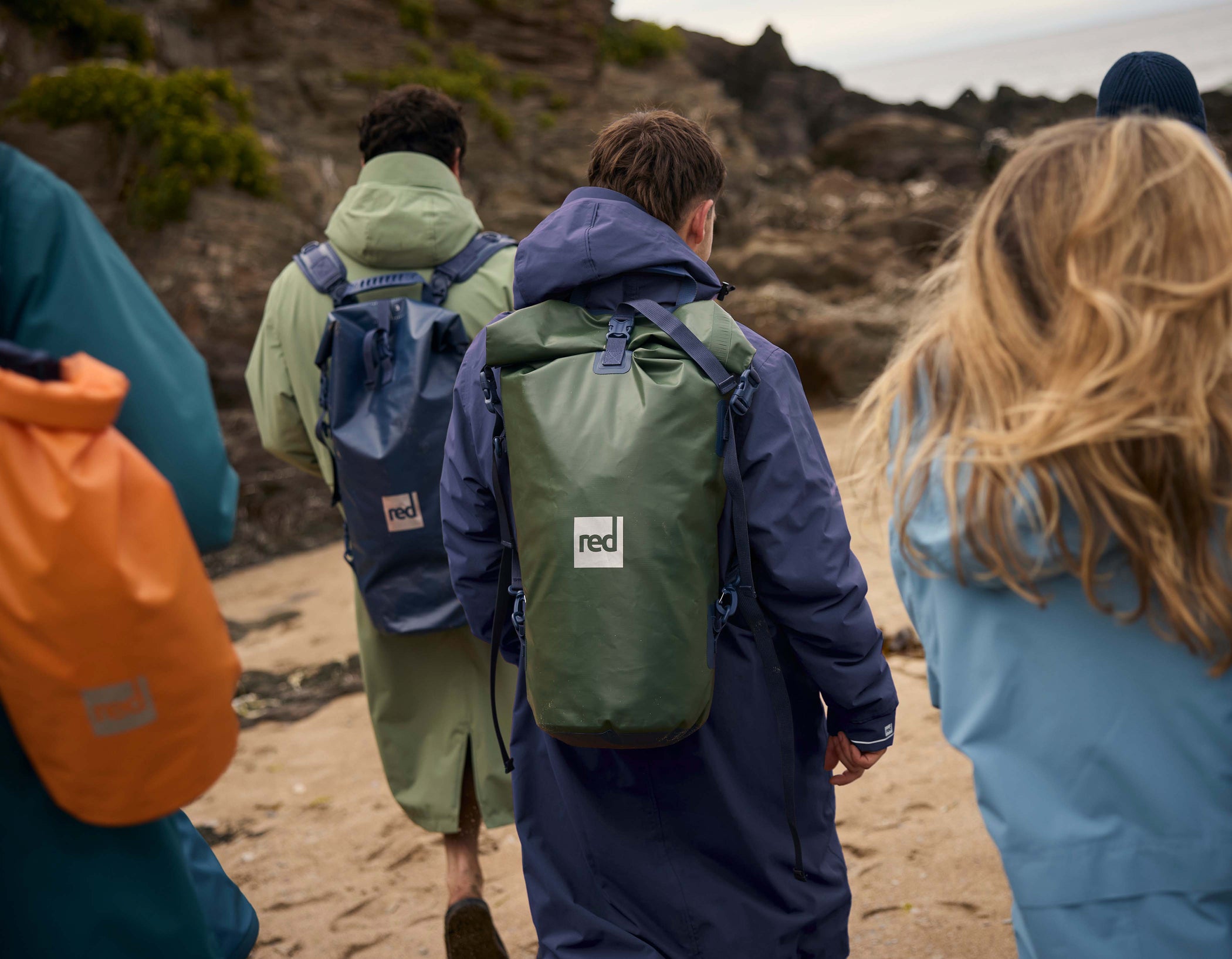
What Size Dry Bag Do You Need For Your Adventure?
Hitting the water? Find out what size dry bag you need to take with you in this handy guide. Our range of roll top dry bags has every adventure covered.


Written by Luke Green /
If you’re relatively new to paddleboarding, one thing will quickly become clear: it’s the standing-up part that is the hardest! Even some of the most seasoned paddlers will have a spectacular story about losing their balance and falling off their board, but their overall talents are also evidence that practice is key to improving balance on a paddleboard. Follow these top tips for balancing on a paddleboard and you’ll be feeling like a pro in no time.
The first of our tips for balancing on a paddleboard should be considered long before you first launch. Many starter paddleboards are made from cheap and overly thick materials which are incredibly hard to balance on. We like to compare the experience they offer to standing on an exercise ball - frustrating, challenging and easy to fall off.
It’s much wiser to invest in a well-made board from the very beginning of your paddleboarding journey. Our all-round boards are designed with precision to offer the stability and stiffness you need to stand up and balance with confidence. At just 4.7” thick, these boards keep you closer to the water and therefore allow you to have greater control with each stroke. While we can’t guarantee that you’ll never fall in, an investment in a good quality board is therefore an investment in your ability to balance for longer when you are getting to grips with the correct paddling technique.
The amount of air you put in your paddleboard also plays a pivotal role in your ability to balance. Think of it this way - the more air in the board, the stiffer it will be. This means that you certainly want to avoid underinflating your board as this will make it much more likely to bend and flex when you stand up. Be careful not to overcompensate and overinflate your board though as this can cause damage. Check out our guide to inflating your board and follow the tips outlined to ensure that your ride is suitably inflated for optimum balance.
While your board technology and setup go a long way towards improving your stability, our next tip for balancing on a paddleboard is one that you can do regardless of the equipment available. Balance for stand-up paddleboarding requires a lot of core strength as well as flexibility in your legs and hips and this can be achieved through a range of exercises you can do at home. Block out a couple of minutes a day to work through a selection of movements and then get back on your board and put your skills to the test - you’ll be amazed at how much difference a small amount of strength training can make!
The right waters will also make a huge difference when it comes to balancing on your paddleboard. Though many people try paddleboarding at the beach on holiday, start with calm and flat water if you can. Lakes and slow-moving rivers are great for refining your balance. Get used to paddleboarding in these locations and build your confidence up before hitting busier or more difficult SUP spots where waves and other water users might add additional challenges.
Small tweaks to your stance and body positioning will also make a huge difference when it comes to improving your balance on a paddleboard. Make sure that you are comfortable and stable when paddling on your knees before trying to stand up, then get up slowly, positioning your feet shoulder-width apart in the middle of the board. Try not to be too rigid when you are standing up and bend your knees slightly to keep your centre of gravity low. You should also try and look forward as much as you can. While it can be tempting to keep glancing at your feet, this can throw off your balance. Focus on the horizon or a fixed point ahead of you instead as this will ensure your posture stays natural and balanced.
It’s also important not to underestimate just how much your general attitude will make a difference to your balance. In fact, our final tip for balancing on a paddleboard is simply to go easy on yourself and remember to have fun! You are bound to fall in from time to time (after all it’s part of the fun!) but feeling nervous and tense about this possibility is a surefire way to ruin the experience. Stick at it, keep practising and you will be balancing on your paddleboard with confidence in no time.
For more paddling tips or advice about choosing the right Red paddleboard for you, don’t hesitate to get in touch with our expert team.
Your bag is currently empty.
Creating an account has many benefits: